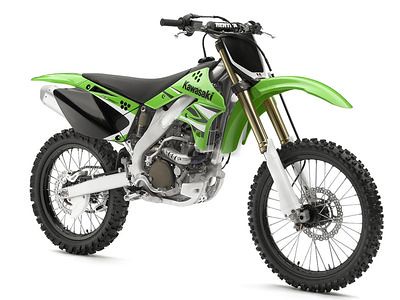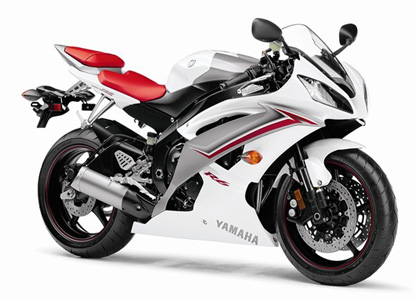MV Agusta F4 1078 RR312 Review
Posted on 5:58 AM by My_revival

It’s black as sin and topped with white like a pint of Guinness. It looks fast, it feels fast and it is fast. The big-bore F4 is in fact one of the fastest and most potent sportbikes in the world. 190 horsepower is not for the faint hearted.
Back in 1997 MV Agusta was merely a name. Cagiva, headed by President Claudio Castiglioni, did not only buy the Ducati brand (1985-1996), it also purchased the rights to the MV Agusta name in 1991. Whilst Ducati under new ownership eventually launched the 999, MV Agusta already had the “true” 916-996-998 replacement in the F4 750. That very design lives on to this day in the F4 1078 RR312.
Even a beautifully composed picture can’t really do the F4 justice enough. You have to be there next to the bike, touch it, and watch the lines flow from one end to the other in 3D. Whilst watching the shiny perfectly polished F4 1078 RR accompanied with exquisite classical music in my head, I push the starter button and put my helmet on. I’m in a hurry to scrub in those brand new Pirelli Supercorsa Pro tyres, and the music in my head changes to a hard-rock mood.
“Come crawling faster - Obey your Master - Your life burns faster - Obey your Master - Master, Master of Puppets I'm pulling your strings” Yeah, that’s putting me in the mood whilst the growling 1078 quickly heats up under me.
The seat is positively old-school sportsbike where my backside is high up and my upper body leaning heavily on my arms to the handlebar. The saddle height is, at 810mm, proper sportbike territory, too.
The footpegs are also high for big lean angles. I feel as if the MV F4 is quite a long bike compared to modern Japanese sportbikes. The big 21-litre fuel tank is long and flat with nice cut-outs for my knees. The big tinted windscreen was an item introduced on the F4 CC in 2007 along with the 1078 motor. I can actually tuck in behind that windscreen even more comfortably than on a Suzuki GSX-R. If you’ve ever tried to stick your head out into 190 mph winds you’ll see why it’s needed on the F4 1078 RR 312.
As from 2008 you can only get the F4 1000 R312 for racing purposes. The big-bore 1078 version is not allowed either in Superstock nor Superbike racing. The F4 1078 RR 312 features a 3mm larger bore than the 1000 and it’s good for 7 extra horsepower and 9 more Nm at 2.000 rpm lower than the litre bike. That translates to a claimed 190 hp at 12,200 rpm and 124 Nm at 8,200 rpm. MV Agusta have also added a new slipper clutch to handle hard decelerations, and the new Sachs steering damper calms the front down during heavy acceleration.
Attached to the new 50mm fully adjustable Marzocchi fork sits another essential new item for deceleration. The Brembo Monoblock radial brakes are the most powerful items available outside of the racetrack. Supreme stability from the solid chassis also allows very hard usage of the front brakes. And it’s needed when a motorcycle doing 190-plus-mph needs to stop before a hairpin corner. On the roads in the hills surrounding the MV Agusta HQ in Varese, I naturally never got the chance to try the top speed. I did sample the full 190 horsepower in the first few gears, though, and the brakes really are very good. I experienced a very progressive feel and they never felt harsh or too sharp.
After what seemed like an eternity I finally reached some roads where I could use the power and precision of the F4 1078 RR. Through towns and villages on the way there, my arms and back started to ache. With 30 C degrees sunshine on the outside, a little warmer than that inside my leathers and a very hot running 1078 engine, I was sweating litres. So finally getting to these more open roads was like reaching heaven after hell. The three first gears are very high, and when the power kicks in the F4 is planted despite the massive output. Wheelies still come easy, but at silly speeds compared to the Brutale 1078RR.
The F4 1078RR 312 feels like a considerably larger motorcycle than the Brutale. The ergonomics are completely different, and suspension settings and calibration softer on the Brutale. The Brutale is also 7 kilos lighter and overall a much better road motorcycle. Stability is better on the F4, as you would expect from a 190-horsepower motorcycle. For pure fun and mischief, the Brutale wins. For serious track-day action and massive top speed, the F4 is the bike.
The extra torque of the F4 compared to any other inline-Four sportsbike makes the whole riding experience much more rewarding. Through the long midrange the F4 1078 accelerates harder and harder, and from 8,000 rpm it’s just so fast that you’re wondering whether there really is anything faster (there always is). The throttle and fuel injection responds willingly and controllably to my right hands command. MV have done a very good job smoothing out things, as I can remember that the F4 1000 I rode almost four years ago was a much more difficult motorcycle to ride. The engine capacity increase itself has helped a lot, as well as a reworked cylinder head with 10mm longer intake tracts.
The 192-kilo claimed dry-weight isn’t the lightest among sportbikes, but with almost a horsepower per kilo you stop thinking about the weight once on the move. The F4 1078 RR feels better and better the faster I go. Immense stability complements the strong engine, and into the corners I can place the front wheel exactly where I want it. Flicking the F4 from left to right you do need to use some of your own muscle, but it makes for a very involving ride on the road at least.
The instrument panel is not very easy to read whilst on the move. In sunlight the warning lights are difficult to see and it’s pretty much only the analogue rev counter that can be seen clearly. The mirrors are not much better, so this motorcycle is as impractical as we had expected. The F4 1078RR is also available in a 1+1 (pillion seat) version.
Conclusion
The MV Agusta F4 1078 RR 312 pretty much guarantees owner satisfaction, even if you just want to keep it for show in your garage. So that point isn’t even an issue. The F4 1078 RR is a pure enthusiast tool and must be bought with passion. If passion for this moving piece of motorcycle art isn’t there, then there’s a lighter, almost as powerful and more comfortable Japanese litre bike in the shop around the corner.
MV Agusta has managed to engineer its own inline-Four engine with class-leading performance and character. That’s no small feat, and coupled with the Tamburini design, we just have to keep bowing in the dust. The downsides are the same as on the Brutale 1078RR: a hot-running engine, heavy clutch, engine vibrations, plus it’s highly uncomfortable at slow speed.
Readmore



























